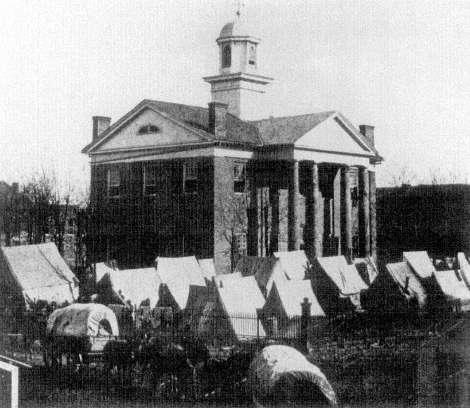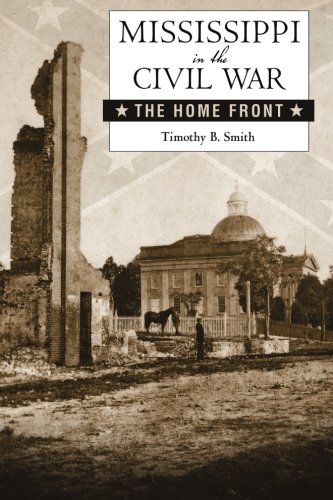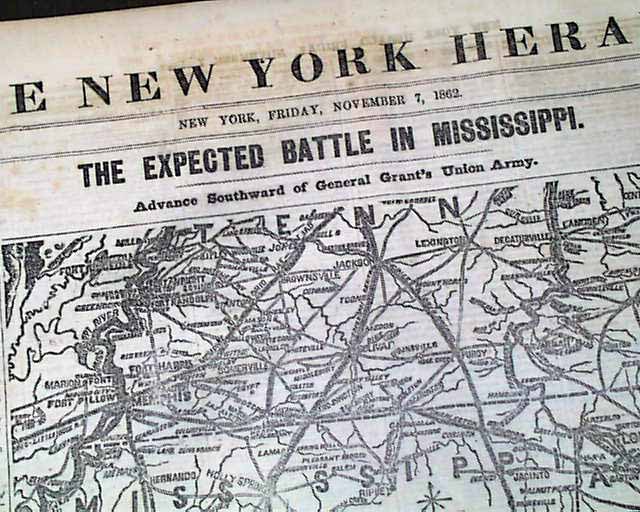
As many times as I’ve driven through or visited Jackson, Mississippi, I never knew that two Civil War battles were fought within days of each other right here at Mississippi’s capital city. The first, the Battle of Jackson, happened May 14, 1863. The second, at nearby Champion Hill. happened two days later. Champion Hill was the pivotal action in guaranteeing the eventual fall of Vicksburg, giving the Union control of the Mississippi River and dividing the Confederacy in half.
Chris Mackowski, in The Battle of Jackson, Mississippi, tells the story of that battle, one that ended in the city’s capture and eventual large-scale destruction. It was something of a pincers battle, with Ulysses Grant directing General James McPherson to lead his troops from the northwest and General William Sherman to lead his troops from the southwest. After the diversionary tactic of Major Benjamin Grierson’s raid through Mississippi from mid-April to early May of 1863, Grant successfully moved his army across the Mississippi River at three places as part one of the capture of Vicksburg.

Part two was critical – capture the disable the railroad (and supply chain) from Jackson to Vicksburg – and that meant an attack on Jackson. Facing him in Jackson was a very reluctant Confederate general, Joseph Johnston – reluctant in that he didn’t want to be in Jackson to begin with and was only there because Confederate President Jefferson Davis ordered him to go. He no sooner arrived than he ordered the troops to retreat eastward.
Mackowski tells an enthralling story, placing the reader in the middle of the action on both sides. You experience the determination of the Union troops and their generals, and you experience the panic felt of the citizens of Jackson as those troops approached the city. Jackson’s fall was not the worst thing to happen to the Confederacy, but it made a significant impact on the people of Mississippi and elsewhere in the South. The city would later be re-occupied by the Confederates, only to be abandoned again on July 14 as Grant marched east from the surrendered Vicksburg. The city was largely a ruin; its destruction earned it the nickname “Chimneyville.”
The book is filled with small but telling details. The Bowman Hotel, where Johnston’s short stay was cut even shorter by the approaching federal, is the same place where Grant sets up his headquarters. Sherman ordered the hotel and other private properties to be protected as the army left for Vicksburg, but fires were set in spite of those orders, and the hotel was destroyed. And also fascinating is the brief account of Grant’s 12-year-old son Fred, racing up the state capital stairs to reach the Confederate flag flying on the flagpole, only to be met by a jubilant federal soldier coming down the stairs, the flag in his arms.

Mackowski is the author or editor of almost 30 books on the Civil War. He’s the editor-in-chief for the Emerging Civil War web site and the editor for the Emerging Civil War Series of books. He is a writing professor and associate dean for undergraduate programs at St. Bonaventure University in New York. He also serves as historian-in-residence at Stevenson Ridge on the Spotsylvania battlefield in Virginia. He’s worked as a historian for the National Park Service, and he gives tours at four major Civil War battlefields – Fredericksburg, Chancellorsville, Wilderness, and Spotsylvania.
The Battle of Jackson, Mississippi is a concise, highly readable account of the battle, filled with maps and photographs and supported by extensive research. It was a relatively small battle in the context of the Civil War, but it was a critical action that helped lead to the fall of Vicksburg two months later.
Top photograph: The Bowman House Hotel in Jackson about 1863, prior to its destruction by fire. Photo courtesy of the Mississippi Department of Archives & History.














